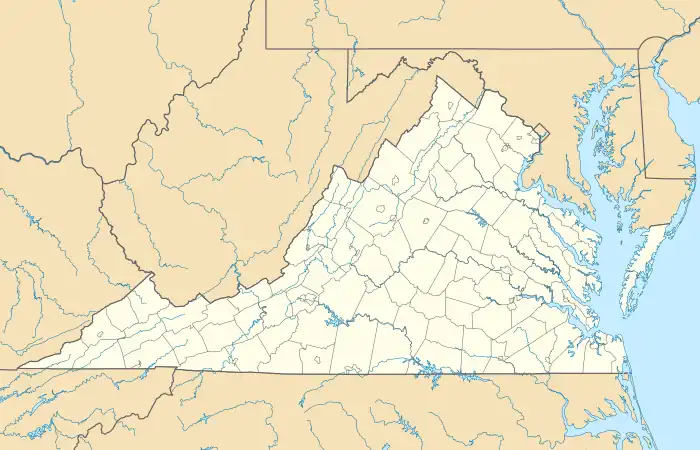Stuart House (Staunton, Virginia)
Stuart House is a historic home located at Staunton, Virginia. The original portion of the house was built in 1791, and is a story, temple-form brick structure fronted by a two-level pedimented portico supported by four very simple and provincial Tuscan order-like columns. The house is five bays wide and three bays deep. The house has a large 2+1⁄2-story brick wing added in 1844. The wing is fronted by a gallery ornamented with lattice-work and supported on brick piers. Also on the property is a gambrel roof frame building, erected sometime after 1783 as Archibald Stuart's residence and law office, and a pyramidal roof smokehouse. According to family tradition, Stuart received plans or suggestions for the house's design from his close friend, Thomas Jefferson. Archibald Stuart died in 1832 and the house was inherited by his son, Alexander Hugh Holmes Stuart (1807-1891).[3]
Stuart House | |
 Stuart-Robertson House, HABS Photo | |
  | |
| Location | 120 Church St., Staunton, Virginia |
|---|---|
| Coordinates | 38°8′50″N 79°4′33″W |
| Area | 9.9 acres (4.0 ha) |
| Built | 1783, 1791, 1844 |
| Built by | Stuart, Archibald |
| Architectural style | Classical Revival |
| NRHP reference No. | 72001531[1] |
| VLR No. | 132-0006 |
| Significant dates | |
| Added to NRHP | May 5, 1972 |
| Designated VLR | January 18, 1972[2] |
It was added to the National Register of Historic Places in 1972.[1] It is located in the Newtown Historic District.
References
- "National Register Information System". National Register of Historic Places. National Park Service. July 9, 2010.
- "Virginia Landmarks Register". Virginia Department of Historic Resources. Retrieved 19 March 2013.
- Virginia Historic Landmarks Commission Staff (January 1972). "National Register of Historic Places Inventory/Nomination: Stuart House" (PDF). Virginia Department of Historic Resources. and Accompanying photo
External links
![]() Media related to Stuart House (Staunton, Virginia) at Wikimedia Commons
Media related to Stuart House (Staunton, Virginia) at Wikimedia Commons
- Stuart-Robertson House (Entrance Gates), 120 Church Street, Staunton, Staunton, VA: 2 photo, 2 measured drawings, and 3 data pages at Historic American Buildings Survey

